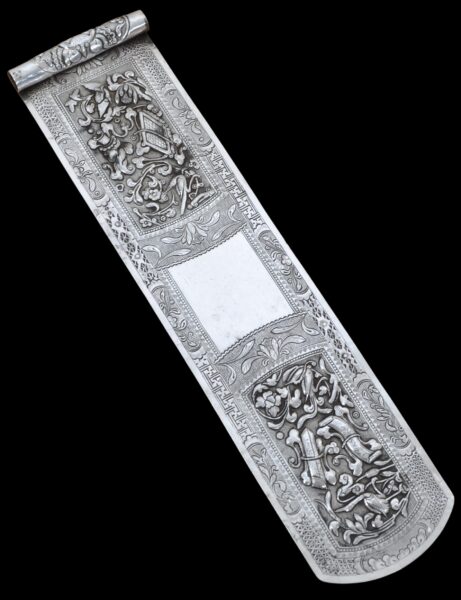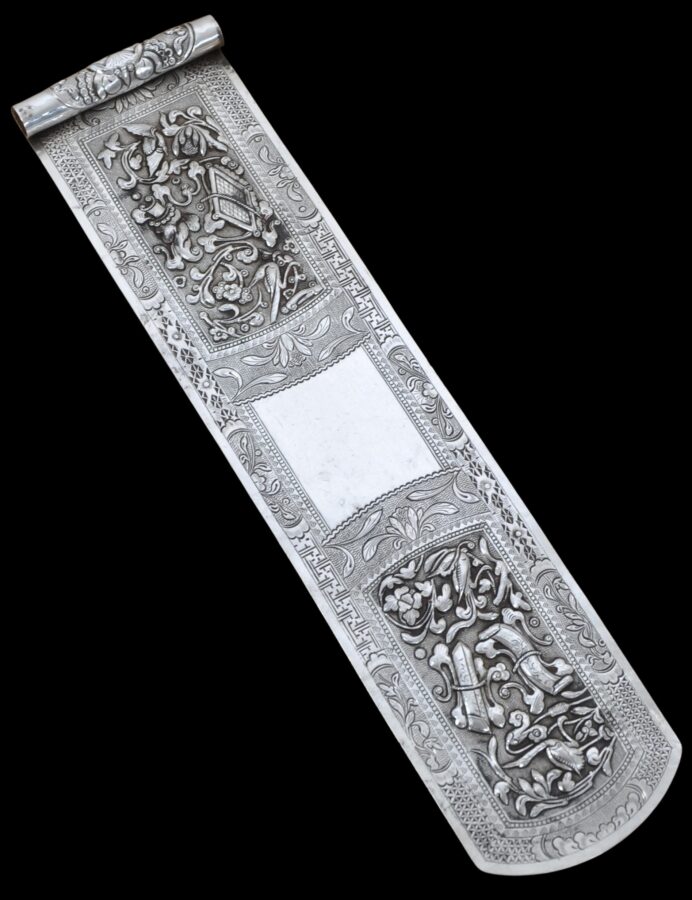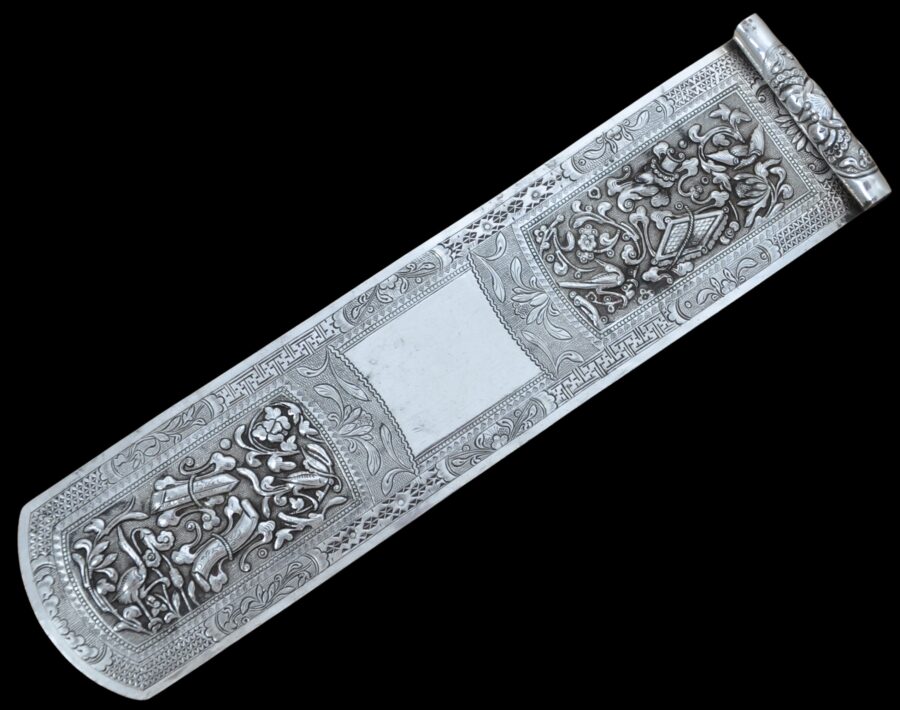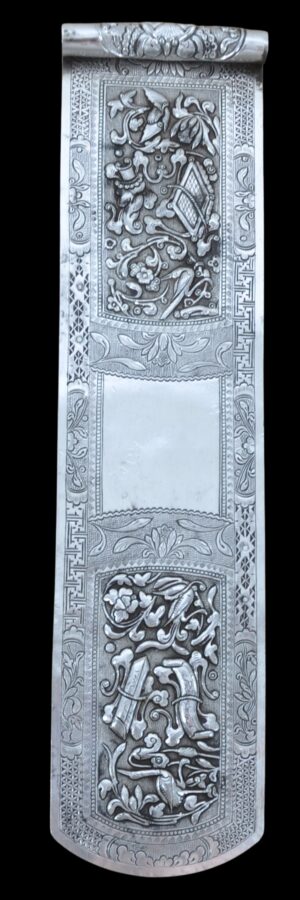This fine, large and rectangular flat hairpin is of high-grade, solid silver, which is likely to be pure and so of a higher grade than sterling silver. It has a rounded end and is wrapped over itself at the other end to create a silver tube. The main part of the pin is repoussed and engraved with storks, Daoist symbols and flowers. A central panel has been left plain. The end-tube is similarly chased. The quality of the work and the size of the hairpin suggests a wealthy owner.
Such hairpins were worn by aristocratic Manchu women in Beijing and other northern centres – their long hair would wrapped around pins such as these and kept in place, giving them the elaborate wing-tipped hairdo that became synonymous with wealthy Manchu women. The desire for such elaborate hairstyles fell out of fashion with the 1911 overthrew of the Manchu-led Qing dynasty which ended imperial rule in China. (Han Chinese women on the other hand favoured smaller and less elaborate hairstyles and so Han hairpins tended to be much smaller and less elaborate.)
The reverse is stamped twice with a Chinese ideogram 德 裕 which transliterate as ‘De Yu’ meaning ‘ virtue’ and ‘abundance’. This will be a brandname for the silversmith or retailer.
Similar though less elaborate examples are illustrated in van Cutsem (2005, p. 140) and Duda (2002, p. 124-25).
This example is in very fine condition.
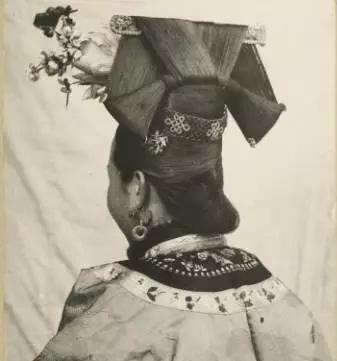
Above: A Manchu Woman with a ‘wing’ hairstyle, probably Beijing. circa 1900. Long, rectangular hairpins of the type here can be seen protruding from the top of the hair arrangement.
References
van Cutsem, A., A World of Head Ornaments: Africa, Asia Oceania, America, Skira, 2005.
Duda, M., Four Centuries of Silver: Personal Adornment in the Qing Dynasty and After, Times Editions, 2002.


